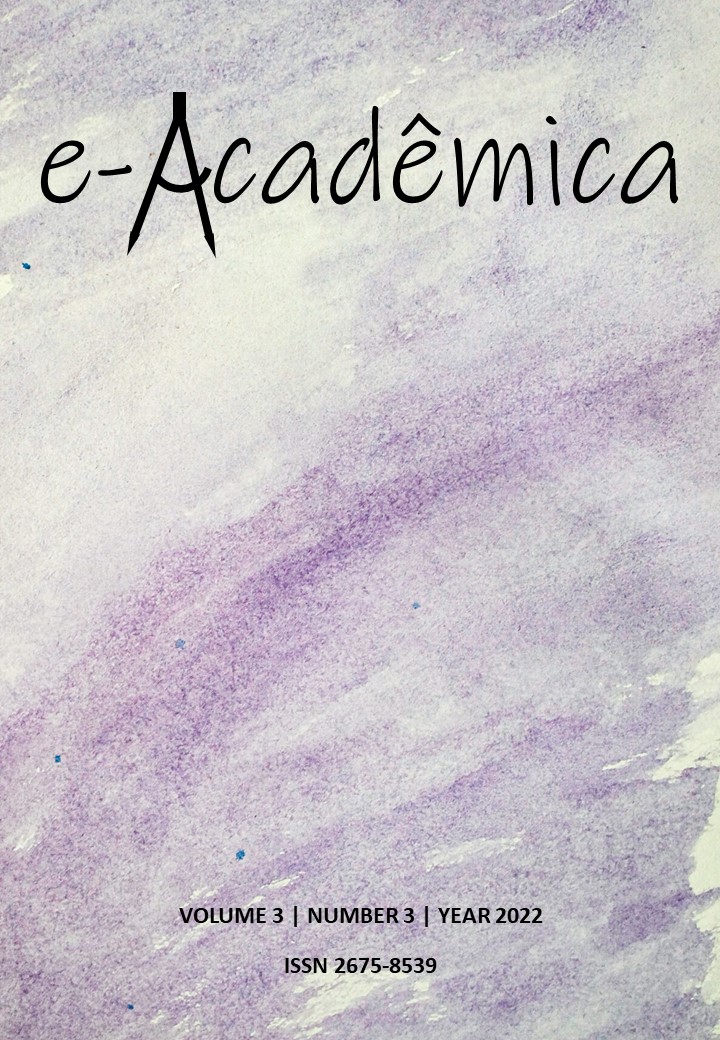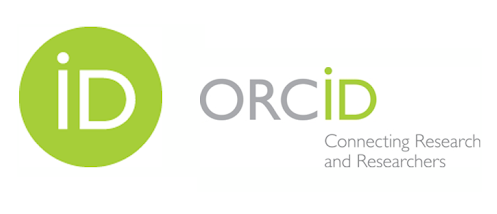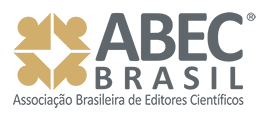Installation of implants using the traditional technique vs. the guided one: case report
DOI:
https://doi.org/10.52076/eacad-v3i3.328Keywords:
Dental implant; Image-guided surgery; Treatment plan.Abstract
The installation of implants for oral rehabilitation is indeed scientifically proven to be a viable technique. The most used techniques today are: the traditional technique and the guided technique. With the arrival of digital dentistry, there was a change in the technique of guided surgery. With the intraoral scanner and new software, it is possible to unite the images from the scan with those from the tomography, thus performing a virtual planning, where it is possible to print surgical guides, allowing greater precision of the surgery. The objective of the work will be to demonstrate and compare the traditional technique and the guided one, through a clinical case. in which both techniques were performed on the same patient. Both techniques will be performed on a 43-year-old patient who lost elements 14, 16 and 26 a few years ago. The guided implant system of SIN will be used in the region of 14 and the traditional system of neodent, in the region of 16 and 26, following the manufacturers instructions, reporting the technique used. We conclude that the use of the guided surgery technique brings several advantages, but due to its indications, it cannot be used in any case. Thus, it should be carried out when possible.
References
Andreiuolo, R., Vasconcellos, F., Andrade, A., Groisman, M., & Júnior, G. (2016). Implante imediato na região anterior: aspectos cirúrgicos e protéticos. Rev. bras. odontol., 73 (1), 84-88. http://revista.aborj.org.br/index.php/rbo/article/view/682/492
Arcuri, L., Lorenzi, C., Cecchetti, F., Germano, F., Spuntarelli, M., & Barlattani, A. (2016). Full digital workflow for implant-prosthetic rehabilitations: a case report. ORAL & implantology, 8(4), 114–121. https://doi.org/10.11138/orl/2015.8.4.114
Arısan, V., Bölükbaşı, N., & Öksüz, L. (2013). Computer-assisted flapless implant placement reduces the incidence of surgery-related bacteremia. Clinical oral investigations, 17(9), 1985–1993. https://doi.org/10.1007/s00784-012-0886-y
Azari A, Nikzad S. Flapless implant surgery: review of the litera- ture and report of 2 cases with computer-guided surgical approach. J Oral Maxillofac Surg. 2008;66:1015-1021.
Bover-Ramos, F., Vina-Almunia, J., Cervera-Ballester, J., Penarrocha-Diago, M., Garcia-Mira, B. (2018). Accuracy of implant placement with computer-guided surgery: a systematic review and meta-analysis comparing cadaver, clinical, and in vitro studies. Int. J. Oral Maxillofac. Implants 33 (1), 101–115, http://dx.doi. org/10.11607/jomi.5556.
Brodala N. (2009) Flapless surgery and its effect on dental implant outcomes. Int J Oral Maxillofac Implants. 24:118-25
Cassetta, M., Stefanelli, L. V., Giansanti, M., & Calasso, S. (2012). Accuracy of implant placement with a stereolithographic surgical template. The International journal of oral & maxillofacial implants, 27(3), 655–663.
Colombo, M., Mangano, C., Mijiritsky, E., Krebs, M., Hauschild, U., & Fortin, T. (2017). Clinical applications and effectiveness of guided implant surgery: a critical review based on randomized controlled trials. BMC oral health, 17(1), 150. https://doi.org/10.1186/s12903-017-0441-y
Wilker Amaral Couto, Mayckson Muniz, Lorena D’Oliveira Gusmão, Milton D’Almeida Ferreira Neto. “Cirurgia guiada em implantodontia: uma revisão integrativa da literatura”, International Journal of Development Research, 11, (12), 52477-52483.
D'haese, J., Ackhurst, J., Wismeijer, D., De Bruyn, H., & Tahmaseb, A. (2017). Current state of the art of computer-guided implant surgery. Periodontology 2000, 73(1), 121–133. https://doi.org/10.1111/prd.12175
Ersoy, A. E., Turkyilmaz, I., Ozan, O., & McGlumphy, E. A. (2008). Reliability of implant placement with stereolithographic surgical guides generated from computed tomography: Clinical data from 94 implants. Journal of Periodontology, 79(8), 1339–1345. https://doi. org/10.1902/jop.2008.
Gargallo-Albiol J, Barootchi S, Salomó-Coll O, Wang HL. Advantages and disadvantages of implant navigation surgery. A systematic review. Ann Anat. 2019 Sep; 225:1-10. doi: 10.1016/j.aanat.2019.04.005. Epub 2019 May 4. PMID: 31063802.
Jung, R. E., Schneider, D., Ganeles, J., Wismeijer, D., Zwahlen, M., Hämmerle, C. H., & Tahmaseb, A. (2009). Computer technology applications in surgical implant dentistry: a systematic review. The International journal of oral & maxillofacial implants, 24 Suppl, 92–109.
Laverty DP, Buglass J, &Patel A. Flapless dental implant surgery and use of cone beam computer tomography guided surgery. Br Dent J. 224:601-611.
Lima, R. S. de P., Lima, G. S. de P., Torres, C. V. G. R., Pimentel, A. C., Sendyk, W. R., & Marão, H. F. (2021). Implante unitário com função imediata após extração: relato de caso. Research, Society and Development, 10(16), e102101623669. https://doi.org/10.33448/rsd-v10i16.23669
Lima, R. S. de P., Lima, G. S. de P., Sendyk, W. R., Reis, F. C. dos S., Massuda, C. K. M., & Marão, H. F. (2022). Instalação de implante através do fluxo digital: relato de caso clínico. Research, Society and Development, 11(7), e55711729501. https://doi.org/10.33448/rsd-v11i7.29501
Massuda, C. K. M., Carvalho, M. R. de ., Miziara, L. N. B., Paiva, R. S. de ., Marão, H. F., Pimentel, A. C., & Sendyk, W. R. (2021). Manejo da perfuração de membrana de Schneider em levantamento de seio maxilar com L-PRF: relato de caso. Research, Society and Development, 10(10), e472101019180. https://doi.org/10.33448/rsd-v10i10.19180
Moraschini, V., Velloso, G., Luz, D., Barboza, E.P., (2015). Implant survival rates, marginal bone level changes, and complications in full-mouth rehabilitation with flapless computer-guided surgery: a systematic review and meta-analysis. Int. J. Oral Maxillofac. Surg. 44 (7), 892–901, http://dx.doi.org/10.1016/j.ijom. 2015.02.013.
Oh, J. H., An, X., Jeong, S. M., & Choi, B. H. (2017). Digital Workflow for Computer-Guided Implant Surgery in Edentulous Patients: A Case Report. Journal of oral and maxillofacial surgery: official journal of the American Association of Oral and Maxillofacial Surgeons, 75(12), 2541–2549. https://doi.org/10.1016/j.joms.2017.08.008
Raico Gallardo, Y.N., da Silva-Olivio, I.R.T., Mukai, E., Morimoto, S., Sesma, N., Cordaro, L., 2017. Accuracy comparison of guided surgery for dental implants according to the tissue of support: a systematic review and meta-analysis. Clin. Oral Implants Res. 28 (5), 602–612, http://dx.doi.org/10.1111/clr.12841.
Schneider, D., Marquardt, P., Zwahlen, M., Jung, R.E., 2009. A systematic review on the accuracy and the clinical outcome of computer-guided template-based implant dentistry. Clin. Oral Implants Res. 20 (Suppl. 4), 73–86, http://dx.doi. org/10.1111/j.1600-0501.2009.01788.x.
Sicilia, A., Botticelli, D., 2012. Computer-guided implant therapy and soft- and hard- tissue aspects. The Third EAO Consensus Conference 2012. Clin. Oral Implants Res. 23 (Suppl. 6), 157–161, http://dx.doi.org/10.1111/j.1600-0501.2012.02553. x.
Smitkarn, P., Subbalekha, K., Mattheos, N., & Pimkhaokham, A. (2019). The accuracy of single-tooth implants placed using fully digital-guided surgery and freehand implant surgery. Journal of clinical periodontology, 46(9), 949–957. https://doi.org/10.1111/jcpe.13160
Tatakis DN, Chien H, Parashis AO. Guided implant surgery risks and their prevention. Periodontol 2000. 2019;81(1):194–208.
Terzioğlu, H., Akkaya, M., & Ozan, O. (2009). The use of a computerized tomography-based software program with a flapless surgical technique in implant dentistry: a case report. The International journal of oral & maxillofacial implants, 24(1), 137–142.
Van Assche, N., Vercruyssen, M., Coucke, W., Teughels, W., Jacobs, R., Quirynen, M., 2012. Accuracy of computer-aided implant placement. Clin. Oral Implants Res. 23 (Suppl. 6), 112–123, http://dx.doi.org/10.1111/j.1600-0501.2012.02552.x.
Van Steenberghe, D., Naert, I., Andersson, M., Brajnovic, I., Van Cleynenbreugel, J., & Suetens, P. (2002). A custom template and definitive prosthesis allowing immediate implant loading in the maxilla: a clinical report. The International journal of oral & maxillofacial implants, 17(5), 663–670.
Vercruyssen, M., Laleman, I., Jacobs, R., Quirynen, M., 2015b. Computer-supported implant planning and guided surgery: a narrative review. Clin. Oral Implants Res. 26 (Suppl. 11), 69–76, http://dx.doi.org/10.1111/clr.12638.
Viana, P. C., Correia, A., Neves, M., Kovacs, Z., & Neugbauer, R. (2012). Soft tissue waxup and mock-up as key factors in a treatment plan: case presentation. The European journal of esthetic dentistry: official journal of the European Academy of Esthetic Dentistry, 7(3), 310–323.
Villaça, J. H., Pesqueira, E. I. De O., & Guimarães, C. M. (2015). Relato de caso clínico de implante e provisionalização imediatos com um inovador sistema de cirurgia guiada – benefícios e avaliação da acurácia. Prótese News, 2 (2), 180-191. https://pesquisa.bvsalud.org/po
Zani, S, Alves, R., Korb, S., Rivaldo, E., & Frasca, L. (2011). Colocação de implante imediato após exodontia: relato de caso clínico. Odontologia Clínico- Científica, 10 (3), 281-284. http://revodonto.bvsalud.org/pdf/occ/v10n3/a18v10n3.pdf
Downloads
Published
How to Cite
Issue
Section
License
Copyright (c) 2022 Ricardo Seixas de Paiva Lima; Gustavo Seixas de Paiva Lima; Wilson Roberto Sendyk; Francisco Carlos dos Santos Reis; Carlos Kiyosh Moreira Massuda; Heloisa Fonseca Marão

This work is licensed under a Creative Commons Attribution 4.0 International License.
Autores que publicam nesta revista concordam com os seguintes termos:
1) Autores mantém os direitos autorais e concedem à revista o direito de primeira publicação, com o trabalho simultaneamente licenciado sob a Licença Creative Commons Attribution que permite o compartilhamento do trabalho com reconhecimento da autoria e publicação inicial nesta revista.
2) Autores têm autorização para assumir contratos adicionais separadamente, para distribuição não-exclusiva da versão do trabalho publicada nesta revista (ex.: publicar em repositório institucional ou como capítulo de livro), com reconhecimento de autoria e publicação inicial nesta revista.
3) Autores têm permissão e são estimulados a publicar e distribuir seu trabalho online (ex.: em repositórios institucionais ou na sua página pessoal) a qualquer ponto antes ou durante o processo editorial, já que isso pode gerar alterações produtivas, bem como aumentar o impacto e a citação do trabalho publicado.










